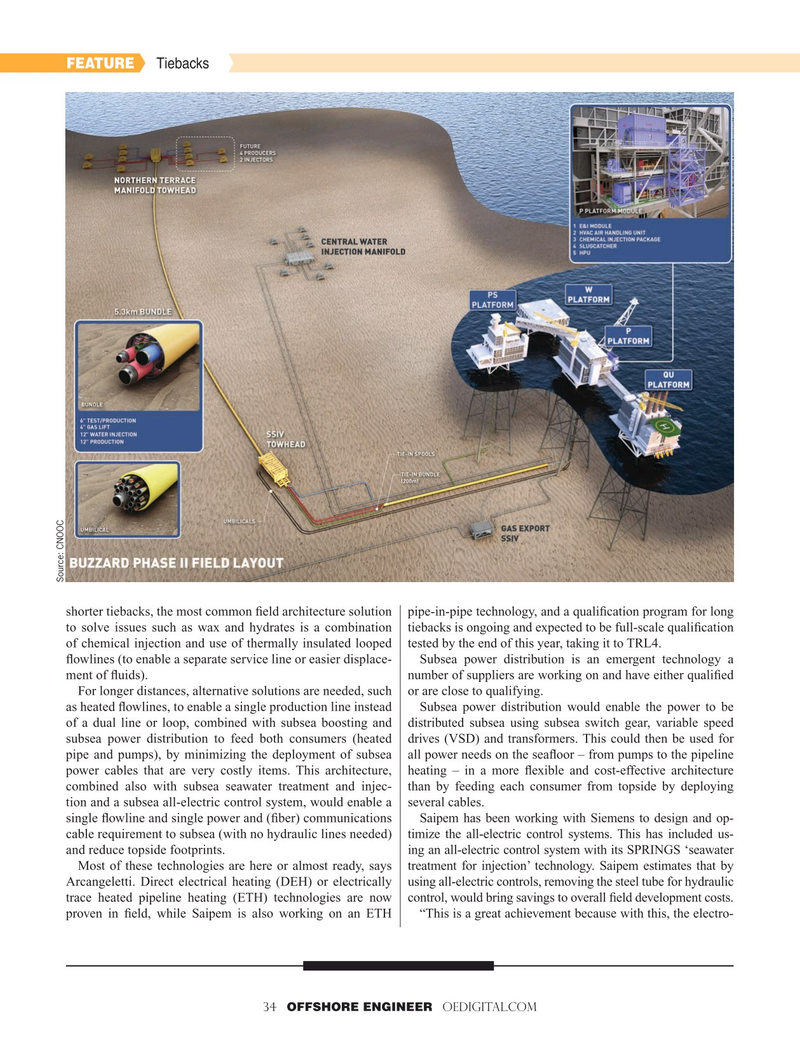
Page 34: of Offshore Engineer Magazine (May/Jun 2019)
Offshore Renewables Review
Read this page in Pdf, Flash or Html5 edition of May/Jun 2019 Offshore Engineer Magazine
FEATURE Tiebacks
Source: CNOOC shorter tiebacks, the most common ? eld architecture solution pipe-in-pipe technology, and a quali? cation program for long to solve issues such as wax and hydrates is a combination tiebacks is ongoing and expected to be full-scale quali? cation of chemical injection and use of thermally insulated looped tested by the end of this year, taking it to TRL4.
? owlines (to enable a separate service line or easier displace- Subsea power distribution is an emergent technology a ment of ? uids). number of suppliers are working on and have either quali? ed
For longer distances, alternative solutions are needed, such or are close to qualifying. as heated ? owlines, to enable a single production line instead Subsea power distribution would enable the power to be of a dual line or loop, combined with subsea boosting and distributed subsea using subsea switch gear, variable speed subsea power distribution to feed both consumers (heated drives (VSD) and transformers. This could then be used for pipe and pumps), by minimizing the deployment of subsea all power needs on the sea? oor – from pumps to the pipeline power cables that are very costly items. This architecture, heating – in a more ? exible and cost-effective architecture combined also with subsea seawater treatment and injec- than by feeding each consumer from topside by deploying tion and a subsea all-electric control system, would enable a several cables. single ? owline and single power and (? ber) communications Saipem has been working with Siemens to design and op- cable requirement to subsea (with no hydraulic lines needed) timize the all-electric control systems. This has included us- and reduce topside footprints. ing an all-electric control system with its SPRINGS ‘seawater
Most of these technologies are here or almost ready, says treatment for injection’ technology. Saipem estimates that by
Arcangeletti. Direct electrical heating (DEH) or electrically using all-electric controls, removing the steel tube for hydraulic trace heated pipeline heating (ETH) technologies are now control, would bring savings to overall ? eld development costs. proven in ? eld, while Saipem is also working on an ETH “This is a great achievement because with this, the electro- 34 OFFSHORE ENGINEER OEDIGITAL.COM

 33
33

 35
35